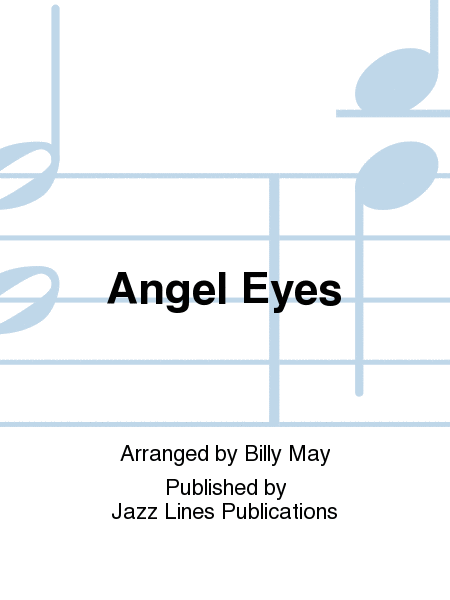Angel Eyes
Recorded by Nat King Cole
-
Ships in 2 to 3 weeks
Details
Description
SKU: JL.JLP-9552S
Recorded by Nat King Cole. Edited by Dylan Canterbury, Rob DuBoff, and Jeffrey Sultanof. Arranged by Billy May. Jazz Vocal. Vocal Key: D minor; Ranges: Trumpet 1: F6; Trombone 1: Bb4. Ballad. Full score. Published by Jazz Lines Publications (JL.JLP-9552S).Written in 1953 for Nat 'King' Cole, Billy May's arrangement of Angel Eyes does a wonderful job of both capturing and expanding upon the dark and sensual melody of what has become one of the most frequently covered ballads in the jazz world. The introduction begins with a not-so-subtle reference to the melody in the brass with some unnervingly dissonant accompaniment from the saxophones. A sudden build-up in dynamics at measure 3 ends with a powerful brass blast before an equally sudden drop off in volume leads into the vocalist's entrance at measure 5. Throughout the vocalist's statement of the melody, the ensemble figures should remain fairly low-key in volume, but should also display a subtle intensity to add to the song's overall mysterious mood. Although the ensemble shout section at measure 37 is only a few measures long, May's intense and dramatic writing is sure to leave an impact on the audience. It is of utmost necessity to have a strong lead trumpet player for this portion of the arrangement. The dynamic level tapers back off for the vocalist's re-entry at measure 41 before swelling once again for a powerful staccato riff at measure 52. Once again, the volume level craters in order to allow the vocalist to "disappear." The arrangement comes to a conclusion beginning at measure 54 with some typical May "swooping" saxophone figures and an ominously quiet dissonant chord in the brass. This arrangement is for jazz big band with vocal soloist. There are five trumpet parts as opposed to the traditional four. This arrangement was prepared from Billy May's original score - it is not a transcription.

 Share
Share